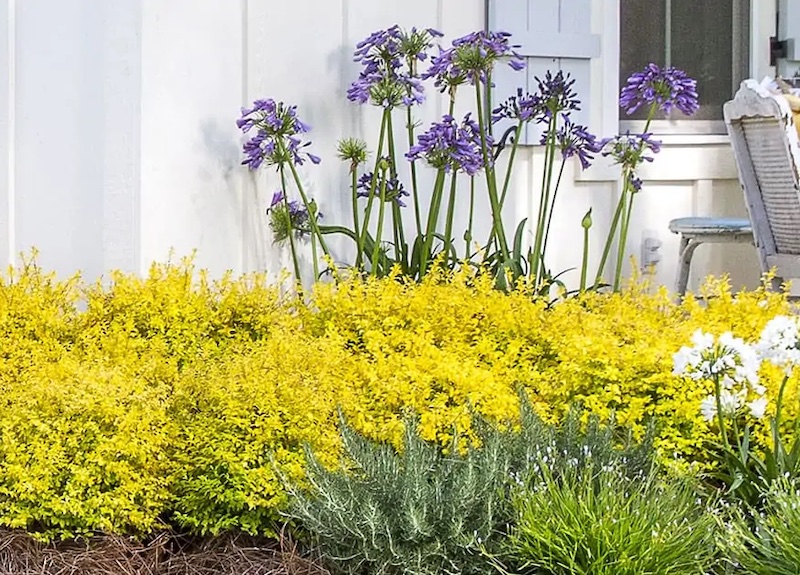Understanding the Art of Agapanthus Care: Important Actions for Healthy And Balanced Development and Vivid Flowers
In the world of cultivation, the farming of agapanthus stands as a satisfying venture for those who seek to nurture these elegant blooming plants. With their striking flowers and stylish vegetation, agapanthus has recorded the focus of garden enthusiasts worldwide. Nevertheless, attaining optimal growth and dynamic blossoms requires a nuanced method that includes various vital steps. From picking the appropriate range to grasping pruning strategies, the trip in the direction of cultivating prospering agapanthus plants is diverse and holds the vital to opening the full potential of these herb gems.

Picking the Right Agapanthus Variety

When choosing the right Agapanthus selection for your garden, take into consideration variables such as climate viability, flower color, and development practice. Furthermore, consider the environment in your region to make certain the Agapanthus selection you choose can thrive in your certain conditions. Comprehending the development habit of various Agapanthus varieties is critical for correct positioning within your yard.
Suitable Growing Problems
Taking into consideration the optimal environmental demands is essential for effective Agapanthus cultivation. Agapanthus plants are sensitive to chilly temperature levels and need to be safeguarded from frost during winter season months.
To make certain healthy growth and vibrant blossoms, plant Agapanthus light bulbs at a deepness of about 2-4 inches and space them 8-12 inches apart. Including raw material, such as garden compost, to the dirt can enhance drain and fertility, promoting durable origin advancement. Mulching around the base of the plants helps retain dampness and suppresses weed development. Normal watering is crucial, especially throughout the growing season, to maintain the dirt consistently wet yet not soaked.
Watering and Fertilizing Tips
Maintaining correct wetness levels and offering important nutrients are crucial elements in the treatment routine for Agapanthus plants. It is critical to strike an equilibrium when it comes to watering Agapanthus. If overwatered, these plants choose continually damp soil yet are vulnerable to root rot. During the growing season, water deeply once a week, ensuring the dirt is well-draining to avoid waterlogging. In hotter climates or throughout periods of drought, more constant watering may be needed to maintain the dirt evenly wet. Nevertheless, lower watering in the winter season to avoid waterlogged problems.
Fertilizing Agapanthus is crucial for promoting healthy development and respected blossoms. Apply a well balanced plant food, such as a 10-10-10 formula, in the very early spring as brand-new development emerges. Repeat this application every 6-8 weeks throughout the growing season. Prevent excessive fertilization, as it can result in rich vegetation at the expense of blossoms. Constantly follow the producer's directions for proper dilution and application methods. By complying with these watering and fertilizing suggestions, you can guarantee your Agapanthus plants thrive and generate dynamic, long-lasting flowers.
Trimming Techniques for Agapanthus
Pruning Agapanthus plants at the appropriate times and with proper strategies is crucial for keeping their wellness and advertising ideal growth and flowering. The perfect time to prune Agapanthus remains in late winter months or very internet early spring click to investigate before brand-new development emerges. Start by getting rid of any kind of yellowing or dead leaves near the base of the plant. Cut them as close to the ground as possible without harming the arising shoots.
For flowered stems, wait until the blooms have actually withered and afterwards trim them back to the base. This not only cleans up the plant's appearance yet likewise urges the development of brand-new flower buds. Deadheading spent blossoms can likewise redirect the plant's power into creating more blossoms instead than setting seeds. Nonetheless, if you wish to gather seeds for propagation, leave some blossoms to mature and dry on the plant.
Remember to make use of tidy, sharp devices to make accurate cuts and minimize the risk of introducing conditions. Agapanthus. Regular pruning will help maintain your Agapanthus looking healthy and balanced and cool while ensuring a plentiful display of beautiful flowers
Taking Care Of Common Parasites and Diseases
After making sure appropriate trimming techniques for Agapanthus, it is important to deal with common parasites and conditions that can affect the health and wellness and vigor of these plants. One common pest that impacts Agapanthus is the Agapanthus gall midge.
Another usual her comment is here concern is fungal fallen leave place, which offers as dark lesions on the leaves. To stop fungal illness, make certain great air flow around the plants, avoid overhead watering, and remove any type of infected fallen leaves without delay. Furthermore, Agapanthus plants can struggle with root rot if they are planted in inadequately draining soil. To avoid this, plant Agapanthus in well-draining dirt and prevent overwatering. By being alert and taking prompt activity versus illness and bugs, you can aid your Agapanthus plants flourish and generate lively blooms.
:max_bytes(150000):strip_icc()/agapanthus-growing-guide-7368912_hero-a3585e4f9ffe4b99a73c7ad8eb4ebe48.jpg)
Verdict
In verdict, mastering the art of agapanthus care entails selecting the best range, supplying excellent growing conditions, proper watering and feeding, appropriate trimming techniques, and dealing with typical insects and illness. By adhering to these important steps, you can guarantee healthy growth and vibrant blooms for your agapanthus plants. Keep in mind to on a regular basis keep an eye on and preserve your plants to promote their overall well-being and longevity.
To ensure healthy and balanced development and vibrant blooms, plant Agapanthus light bulbs at a deepness of regarding 2-4 inches and space them 8-12 inches apart. By following these watering and fertilizing pointers, you can guarantee your Agapanthus plants flourish and produce vivid, durable blossoms.
One typical pest that influences Agapanthus is the Agapanthus gall midge. Furthermore, Agapanthus plants can endure from root rot if they are planted in inadequately draining soil. By following these essential actions, you can guarantee healthy growth and lively blooms for your agapanthus plants.
Comments on “Agapanthus Buddy Plants: Perfect Pairings for Your Garden”